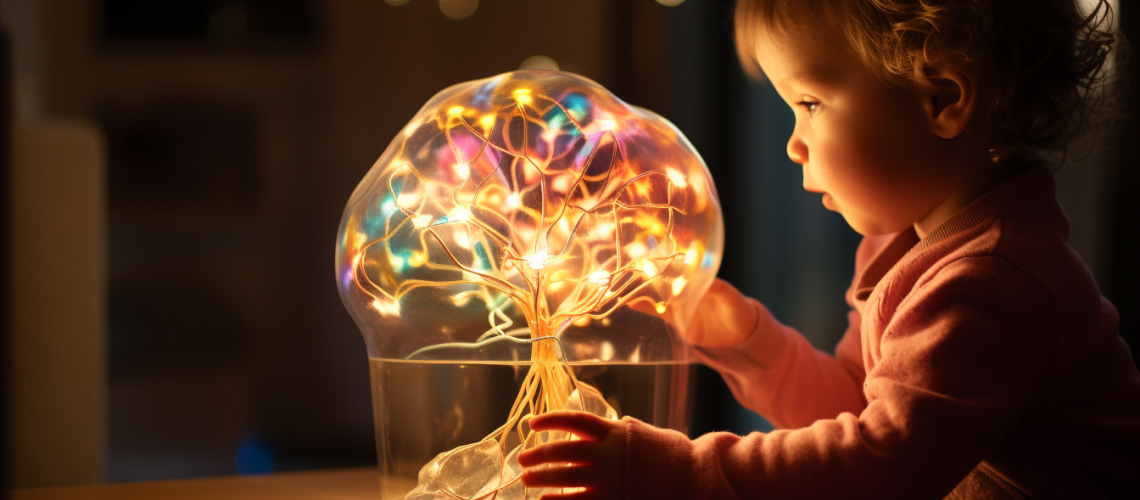Exploring the Link Between Early Childhood Development and Creativity
The human brain has captivated humanity for centuries, and modern technology now enables us to witness the formation of brain receptors and understand the stimuli that have the most significant impact on our minds.
Brain scans of children have revealed a critical finding: when receptors fail to form, they eventually wither away, making rewiring impossible. This emphasizes the crucial role of early experiences and play in stimulating the brain, fostering cognitive development, and nurturing creativity in children from birth to around the age of five.
Unleashing Creativity through Physical Exploration: Allowing children to physically move, explore, and transform objects is pivotal in unlocking their creative potential. Starting as early as one year of age, under direct supervision, encourage children to engage with eco-friendly clay, fabric, and age-appropriate toys. While some parents may seek perfection and expect puzzle pieces to fit flawlessly, this approach hampers the spirit of exploration. When children explore, they begin to recognize patterns that lead to success and others that may result in failure, such as a puzzle piece not fitting correctly. Failure plays a vital role in brain development, fostering the formation of receptors responsible for higher-level thinking abilities in young children.
Exploration as a Pathway to Creativity: Exploration is closely intertwined with creativity and the further development of ideas. For instance, if a parent asks their child to color a bunny and the child chooses a purple crayon, it’s important not to dismiss the choice by stating that bunnies can only be pink or white. Instead, delve into the child’s reasoning behind the color selection. Show them real bunny pictures and express the colors observed in the real world. It’s worth noting that young children often use darker colors in their artwork, signifying not just their creativity but also their age-appropriate fine motor skills. Darker colors are more visible, and children may gravitate towards them due to the limited strength in their fingers. Rather than physically struggling with a lighter tone, such as painting an entire bunny in pink, they may opt for purple as a creative and exploratory choice. By asking questions and exploring their color choice further, children gain insights into their own thinking processes.
Fostering Creativity through Experiences: The cultivation of creativity in young children is greatly enhanced through a wide range of experiences. Even before birth, exposing your child to classical music can have a positive impact. From their early years through middle school, encourage hands-on art activities such as drawing, molding, constructing, painting, playing instruments, and dancing. These art-based activities not only nurture creativity and improve brain function but also serve as effective stress relief and guided meditation exercises for both children and adults. Engaging in creative endeavors allows the brain to both engage and relax, opening doors for exploration and personal growth.
Conclusion: Early experiences and play play a crucial role in shaping children’s developing brains, fostering cognitive growth, and nurturing creativity. By embracing exploration, encouraging creative choices, and providing diverse experiences, parents can support their children’s cognitive and creative development. Understanding the significance of early experiences and play empowers parents to create an environment that promotes brain stimulation, laying a foundation for lifelong learning and creative thinking.



